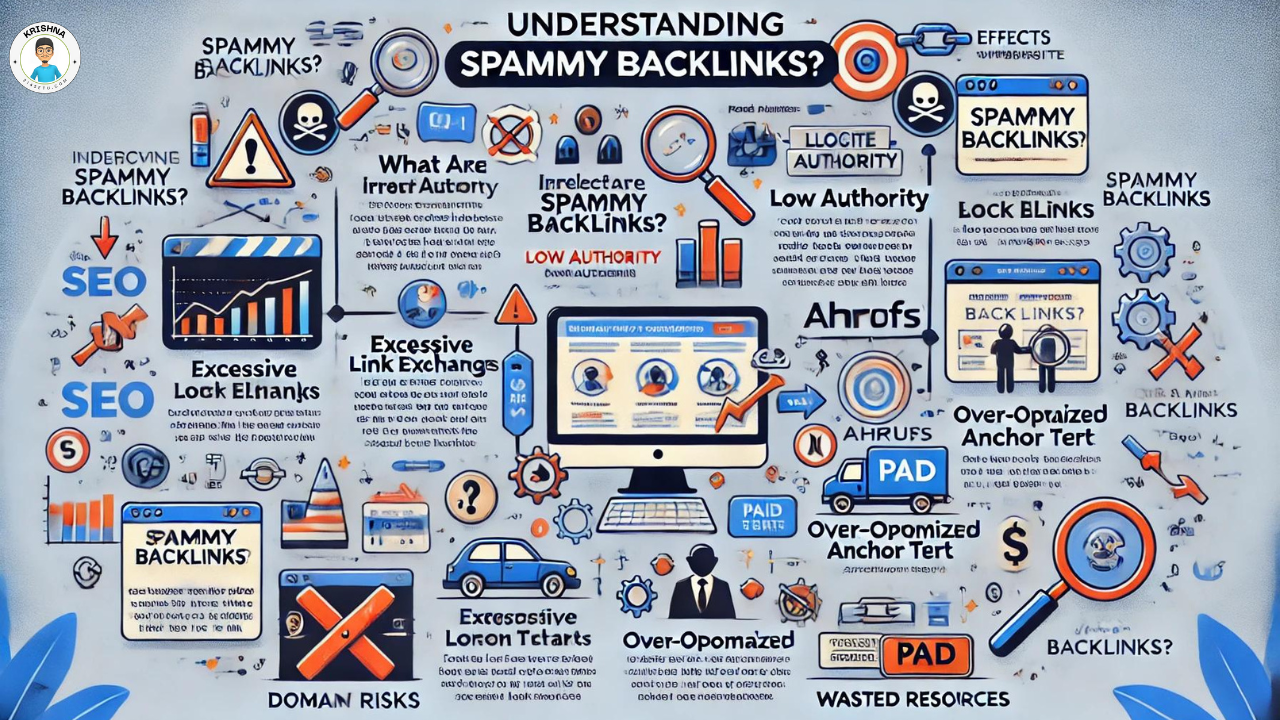
Backlinks are a cornerstone of SEO, helping to build a website’s authority and improve its ranking on search engine results pages (SERPs). However, not all backlinks are beneficial. Spammy backlinks can do more harm than good, potentially damaging your site’s ranking and reputation.
What Are Spammy Backlinks?
Spammy backlinks are low-quality links that come from irrelevant or dubious sources, often created to manipulate search engine rankings. They can be identified by several characteristics:
- Irrelevant Sources: Links from websites that have no connection to your niche or industry.
- Low Authority: Links from websites with low domain authority or those considered spammy by search engines.
- Excessive Link Exchanges: Participating in link exchange schemes where links are traded excessively.
- Paid Links: Purchasing links from link farms or other low-quality sources.
- Over-optimized Anchor Text: Using exact match keywords excessively in the anchor text.
How Spammy Backlinks Affect Your Website
Spammy backlinks can have several negative effects on your website:
- Penalty Risks: Search engines like Google penalize sites that use manipulative link-building practices, which can lead to a significant drop in rankings or even deindexing.
- Loss of Trust: Both search engines and users may lose trust in your site if it’s associated with spammy links, leading to reduced traffic and a negative brand perception.
- Wasted Resources: Time and money spent on acquiring spammy backlinks could be better used for creating quality content and building genuine relationships.
How to Identify Spammy Backlinks
To maintain a healthy SEO strategy, regularly audit your backlink profile using these steps:
- Use SEO Tools: Tools like Google Search Console, Ahrefs, and SEMrush can help you analyze your backlink profile and identify low-quality links.
- Check Domain Authority: Evaluate the domain authority of linking websites; low authority sites are often indicative of spammy backlinks.
- Assess Relevance: Ensure that the linking sites are relevant to your industry or niche.
- Review Anchor Text: Look for over-optimized or exact match anchor texts, which could signal manipulative linking practices.
How to Remove Spammy Backlinks
Once identified, take action to remove spammy backlinks:
- Contact Webmasters: Request removal of spammy links by reaching out to webmasters of the linking sites.
- Disavow Links: Use Google’s Disavow Tool if you can’t get the links removed.
- Monitor Regularly: Continuously monitor your backlink profile to ensure no new spammy links are added.
Best Practices for Building Quality Backlinks
Instead of relying on spammy backlinks, focus on ethical link-building practices:
- Create High-Quality Content: Offer valuable, informative content that attracts natural backlinks.
- Engage with Your Audience: Build a loyal audience who will naturally link to your content.
- Build Genuine Relationships: Network with reputable websites and influencers in your industry for natural link-building opportunities.
Conclusion
Spammy backlinks can severely impact your website’s SEO performance and reputation. By understanding how to identify and remove these harmful links, you can protect your site from penalties and maintain a strong, credible online presence. Focus on building high-quality backlinks through ethical practices to ensure long-term SEO success.

